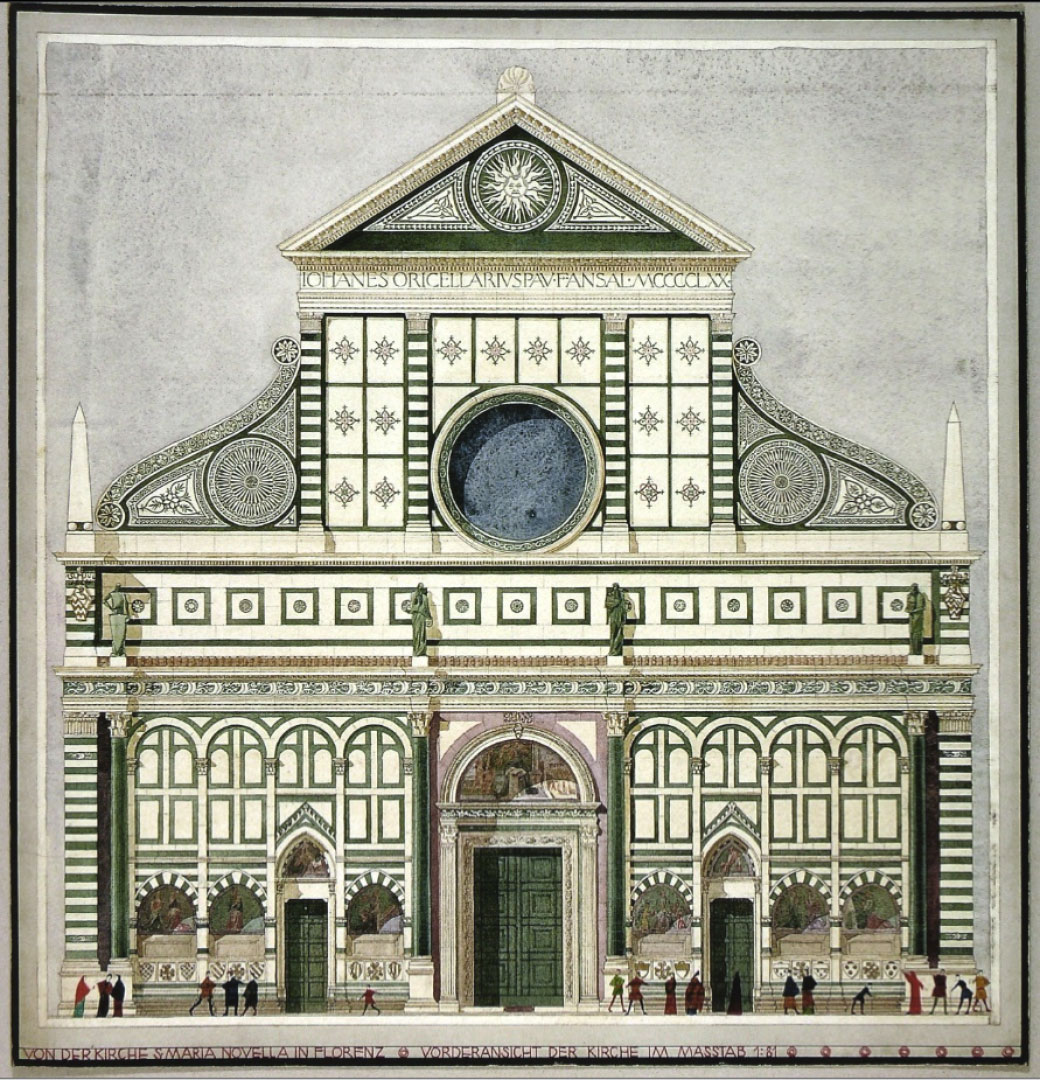Protorenaissance and Leon Battista Alberti
Research Project: PD Dr. Berthold Hub

Based on the case of three Viennese architects, this research project is the first to utilize a comparative perspective to evaluate the reasons, contexts, and consequences of engaging with the Tuscan or Florentine "Protorenaissance" and Leon Battista Alberti in the decade before the First World War. The project documents the training of architects and reconstructs their journeys to Italy, especially Florence. Additionally, the possible contacts with foreign historical and art historical institutes, as well as with Italian architects and art history are explored. In particular, the project aims to investigate representations of the structures in a variety of media. Lastly, the project raises questions about the significance of the inlaid architecture of the so-called Protorenaissance and those of Leon Battista Alberti, as well as the importance of his architectural theoretical work for architectural and journalistic activities at the "midpoint of modernity" (Klaus-Jürgen Sembach). By researching the hitherto overlooked reception of the Early Renaissance at the beginning of the 20th century, the project aims to contribute to the reconstruction of the genetic evolution of modernity, which would later manifest as "ahistorical" after the First World War.
The project's narrow focus on the interest in the Tuscan Protorenaissance and Leon Battista Alberti is intended to be expanded at a later stage to the examination of architects' journeys at the beginning of the 20th century and their significance for the development of modernity in general.
HIL D 65